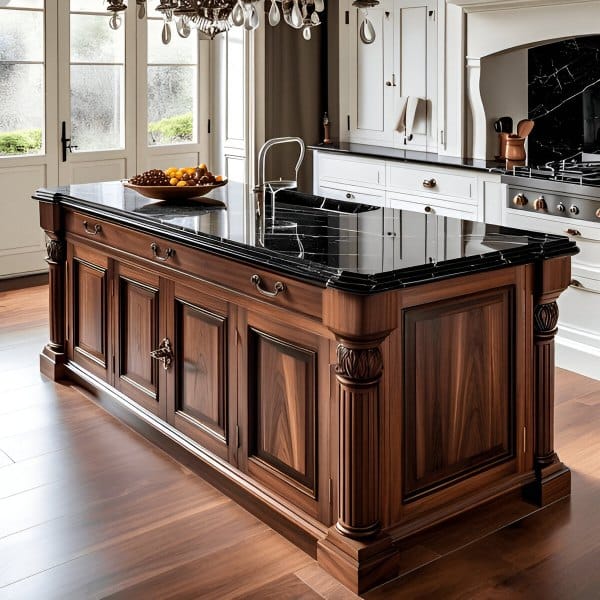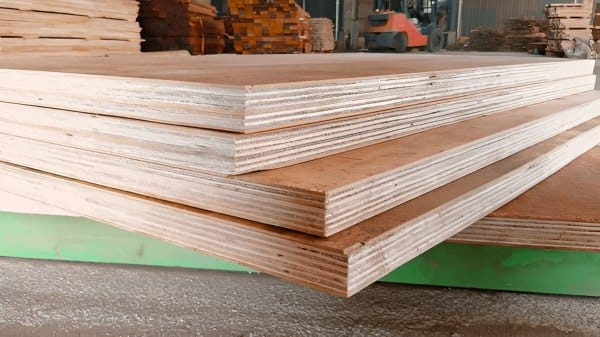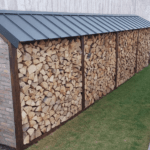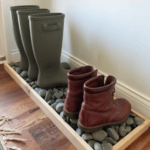
In recent years, epoxy countertops have surged in popularity among homeowners and DIY enthusiasts. Their aesthetic appeal, coupled with the promise of durability, has made them a preferred choice for various applications. But how durable are plywood epoxy countertops, really? This article delves into the specifics of using plywood as a substrate for epoxy countertops, exploring their mechanical properties, potential limitations, and best practices for application.
The Rise of Epoxy Countertops
Epoxy countertops have captured the attention of many due to their glossy finish and versatility. They can mimic the appearance of natural stone while providing a seamless surface that is resistant to stains and moisture. As more people seek unique and customizable options for their homes, epoxy countertops have become a go to solution.
This trend can be attributed to several factors:
- Customization: Epoxy allows for endless design possibilities. Homeowners can choose colors, patterns, and even embed objects like stones or shells within the epoxy for a personalized touch.
- Affordability: Compared to natural stone countertops, epoxy options can be more budget-friendly, especially when applied over less expensive substrates like plywood.
- Durability: Epoxy is known for its hard, durable surface that can withstand everyday wear and tear, making it suitable for high-traffic areas.
- Ease of Maintenance: The non-porous nature of epoxy makes it resistant to stains and easy to clean, which is a significant advantage for busy kitchens or workshops.
Is Plywood a Reliable Base?

When considering epoxy countertops, the choice of substrate is crucial. Plywood is often favored for its strength and flexibility, but is it a reliable base for epoxy?
Plywood is constructed from layers of wood veneer, which are glued together in alternating directions. This construction method gives plywood its strength and stability, making it less prone to warping compared to solid wood. However, not all plywood is created equal. When selecting plywood for epoxy countertops, consider the following:
- Grade of Plywood: Higher-grade plywood (such as A or B grade) is recommended for epoxy applications. These grades have fewer defects and voids, ensuring a smoother surface for epoxy application.
- Thickness: A thickness of at least 3/4 inch is ideal for providing adequate support and stability for the epoxy layer.
- Type of Plywood: Marine-grade plywood is an excellent choice for areas with high moisture levels, as it is designed to resist water damage.
How Durable Is Epoxy for Countertops?
Mechanical Performance
Epoxy coatings are known for their impressive mechanical properties. They offer excellent resistance to water, scratches, and heat, making them suitable for high-traffic areas like kitchens and workshops.
- Water Resistance: Epoxy creates a non-porous surface that prevents water absorption, minimizing the risk of mold and mildew. This characteristic is particularly beneficial in kitchens and bathrooms, where moisture is prevalent.
- Scratch Resistance: While epoxy is durable, it can still be susceptible to superficial scratches. Care should be taken to avoid sharp objects and heavy impacts that could mar the surface.
- Heat Resistance: Epoxy can withstand moderate heat, but extreme temperatures can cause damage. Always use trivets or hot pads to protect the surface from hot pots and pans. Some epoxy formulations are specifically designed to enhance heat resistance.
Limitations
Despite their advantages, plywood epoxy countertops do have some limitations.
- Superficial Scratches: While the surface is tough, it can develop scratches over time, especially in high-use areas. Regular maintenance and care can help mitigate this issue.
- UV Sensitivity: Prolonged exposure to sunlight can cause yellowing and degradation of the epoxy. Using UV-stabilized resins can mitigate this issue. Additionally, consider using window treatments or placing the countertop away from direct sunlight to prolong its lifespan.
- Maintenance Requirements: Regular cleaning and occasional re-sealing are necessary to maintain the countertop’s appearance and durability. Over time, the epoxy may require a fresh topcoat to restore its shine and protective qualities.
Can You Put Epoxy on Plywood Countertops?
Yes, you can apply epoxy to plywood countertops, but certain conditions must be met:
- Choosing the Right Plywood: Opt for high-quality, void-free plywood to ensure stability and durability. Avoid using low-grade plywood, as it may contain defects that could compromise the epoxy application.
- Surface Preparation: Properly prepare the surface by sanding and cleaning it to promote adhesion. Sand the plywood to remove any rough spots and ensure a smooth surface for the epoxy to adhere to. Use a vacuum and a damp cloth to remove dust and debris.
- Dimensional Stability: The plywood must be dimensionally stable, meaning it should be acclimated to the environment to prevent warping or cracking. Allow the plywood to sit in the room where it will be installed for a few days before applying epoxy.
Best Practices for Application
- Ensure a Clean Surface: Remove dust, oils, and debris. A clean surface is crucial for proper adhesion.
- Use a Primer: Applying a primer can enhance adhesion and provide a better bond between the plywood and the epoxy.
- Follow Manufacturer Instructions: Adhere to the recommended mixing ratios and curing times. Different epoxy products may have specific instructions that should be followed for optimal results.
- Apply in a Controlled Environment: Temperature and humidity can affect the curing process. Aim for a temperature range of 70-80°F (21-27°C) and moderate humidity levels.
- Use a Heat Gun or Torch: After pouring the epoxy, use a heat gun or torch to eliminate bubbles that may form in the mixture. This step is essential for achieving a smooth finish.
Is Plywood or MDF Better for Epoxy Countertops?
When comparing plywood and MDF (medium density fiberboard) for epoxy countertops, several technical aspects come into play:
- Moisture Resistance: Plywood generally offers better moisture resistance than MDF, making it a more suitable choice for areas prone to humidity. MDF is more susceptible to water damage and can swell when exposed to moisture.
- Mechanical Strength: Plywood is typically stronger and more durable than MDF, which can be prone to sagging or warping. Plywood’s layered construction provides superior structural integrity.
- Weight Considerations: While both materials are relatively lightweight, plywood is often preferred for applications where weight is a concern, such as in mobile setups like van conversions.
- Cost: MDF is usually less expensive than plywood, making it an attractive option for budget-conscious projects. However, the long-term durability of plywood may justify the higher initial investment.
How Long Does Epoxy Countertop Coating Last?
The longevity of epoxy countertop coatings varies based on usage:
- Domestic Use: Typically lasts 5-10 years with proper care. Regular maintenance and avoidance of harsh chemicals can extend the life of the coating.
- Heavy Use: In commercial settings, the lifespan may decrease to 3-5 years. High traffic and exposure to heavy objects can wear down the epoxy faster.
Factors Influencing Longevity
- Application Quality: Proper mixing and application are crucial. Follow the manufacturer’s guidelines for mixing ratios and curing times to ensure the best results.
- Maintenance: Regular cleaning and re-sealing can extend the life of the countertop. Use mild soaps and avoid abrasive cleaners that can scratch the surface.
- Resin Quality: High-quality resins tend to last longer and perform better. Investing in a reputable epoxy product can make a significant difference in durability.
Common Issues and How to Prevent Them
While epoxy countertops can be durable, they are not without issues. Common problems include:
- Cracks: Can occur due to improper application or thermal shock. Ensure that the epoxy is applied in a controlled environment to minimize temperature fluctuations during curing.
- Bubbles: Often result from trapped air during mixing. Use a heat gun or torch to remove bubbles after pouring the epoxy.
- Yellowing: Caused by UV exposure. To prevent this, use UV-stabilized resins and consider applying a clear topcoat for additional protection.
Prevention Tips
- Use UV-Stabilized Resins: These formulations are designed to resist yellowing and degradation from sunlight exposure.
- Apply a Finishing Sealant: A clear sealant can provide an extra layer of protection against scratches and UV damage.
- Ensure Thorough Mixing: Properly mix the epoxy to avoid bubbles and ensure an even cure.
Best Use Cases for Plywood Epoxy Countertops
Plywood epoxy countertops are ideal for various applications, including:
- Kitchens: Durable and easy to clean, making them perfect for food preparation areas.
- Workshops: Resistant to spills and stains, they can withstand the rigors of a busy workspace.
- Van Conversions: Lightweight and customizable surfaces are ideal for mobile living spaces.
- Laundry Rooms: Epoxy countertops can handle moisture and spills, making them suitable for laundry applications.
When to Avoid This Solution
While plywood epoxy countertops are versatile, they may not be suitable for every situation. Avoid using them in areas with extreme temperature fluctuations or where heavy impacts are expected, such as:
- Outdoor Areas: Unless specifically designed for outdoor use, epoxy may not withstand the elements.
- High-Impact Zones: Areas prone to heavy impacts, such as commercial kitchens, may require more robust materials.
Conclusion
In summary, plywood epoxy countertops can be a durable and aesthetically pleasing option if certain guidelines are followed. They offer a unique blend of beauty and functionality, making them suitable for various applications. However, it’s essential to consider the specific needs of your project and whether this solution aligns with your requirements.
Call to Action
Are plywood epoxy countertops the right solution for your project? Consider your usage, maintenance capabilities, and aesthetic preferences before making a decision. With the right approach, you can enjoy the benefits of a stunning and durable countertop for years to come.
FAQ
1. How long do plywood epoxy countertops last?
With proper care, they can last between 5-10 years for domestic use.
2. Can I use MDF instead of plywood for epoxy countertops?
While possible, plywood is generally preferred due to its superior moisture resistance and strength.
3. What maintenance do epoxy countertops require?
Regular cleaning and occasional re-sealing are recommended to maintain their appearance and durability.
4. How can I prevent yellowing of my epoxy countertop?
Using UV-stabilized resins and avoiding direct sunlight can help prevent yellowing.
5. What are the best practices for applying epoxy to plywood?
Ensure a clean surface, use a primer, follow manufacturer instructions, and apply in a controlled environment for the best results.
Sources
- “Epoxy Resin for Countertops” – Home Improvement Magazine
- “Understanding Plywood and MDF” – Woodworking Journal
- “Maintaining Your Epoxy Countertops” – DIY Network
- “The Science of Epoxy Coatings” – Chemical Engineering News
- “Choosing the Right Plywood for Your Project” – Fine Woodworking





1 thought on “How Durable Are Plywood Epoxy Countertops?”